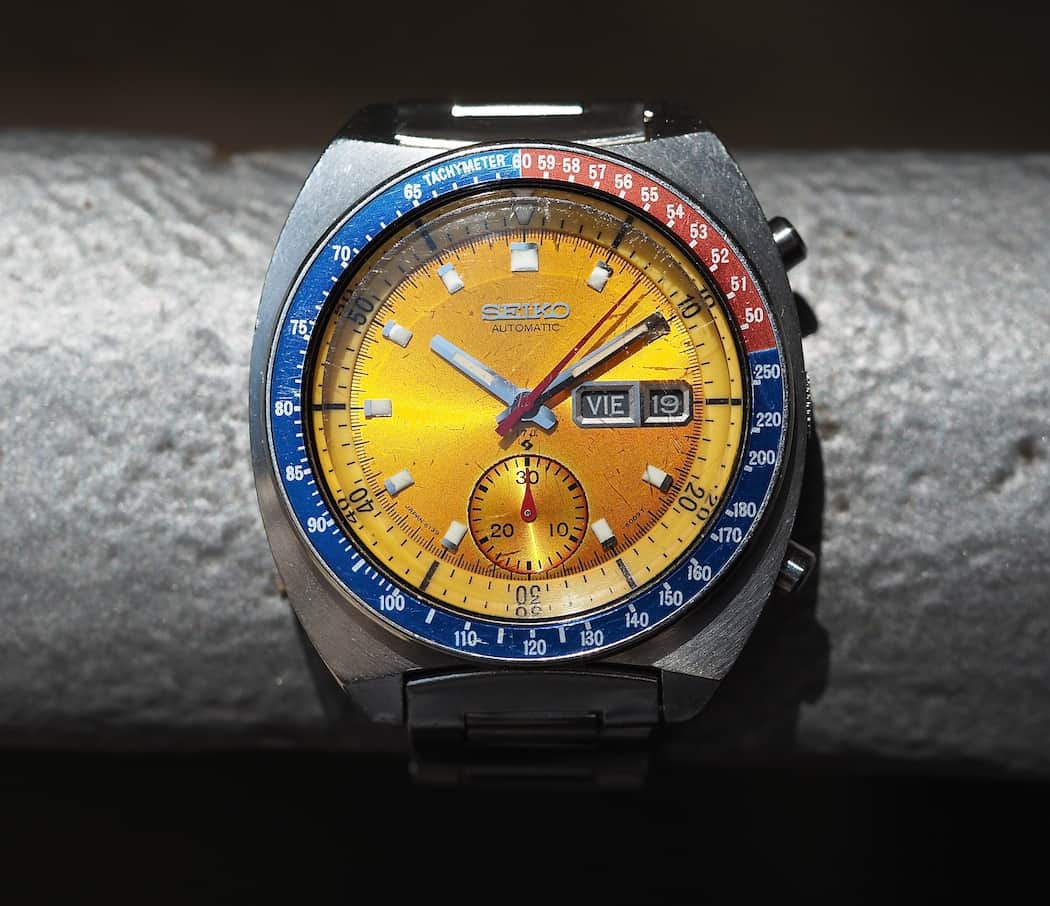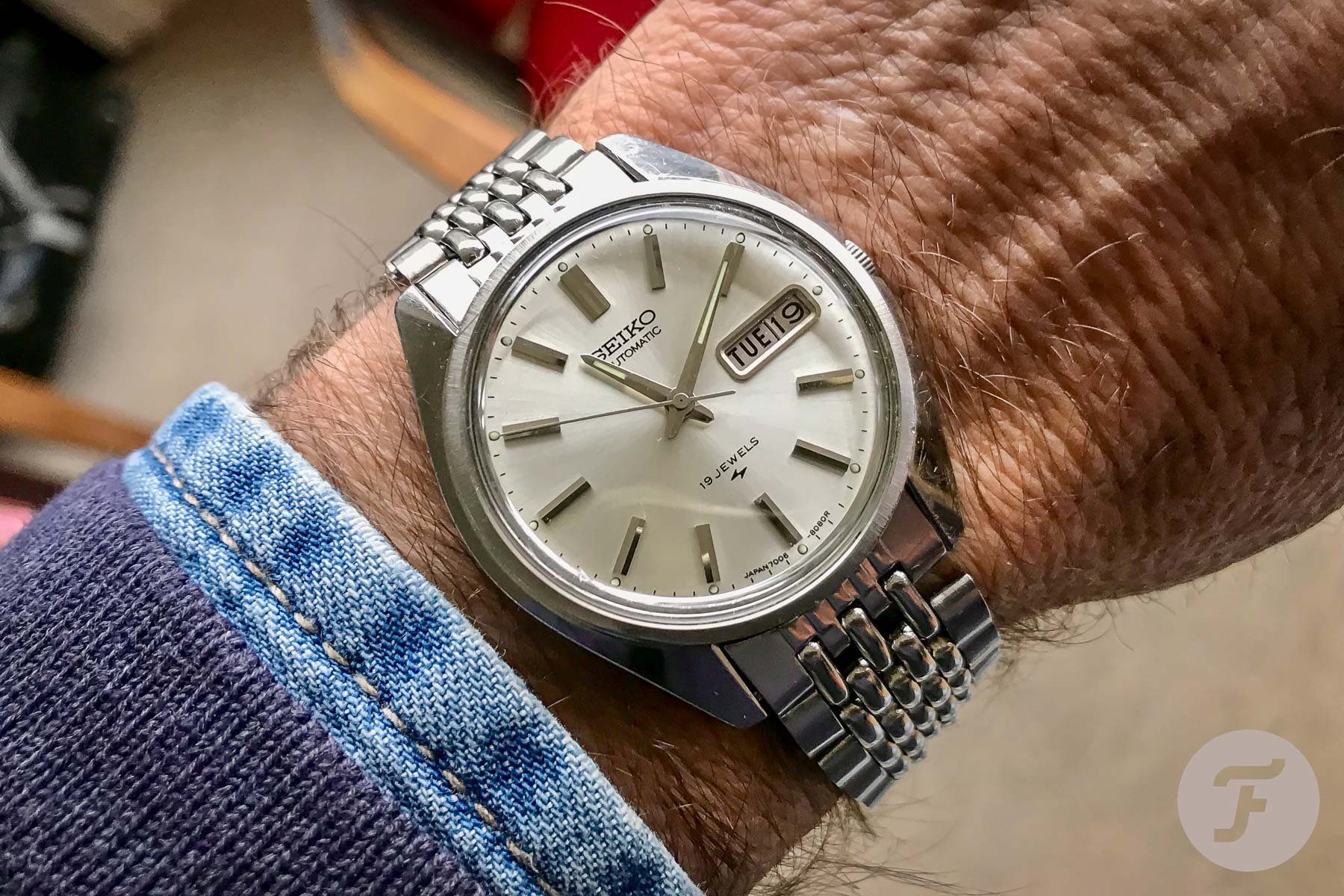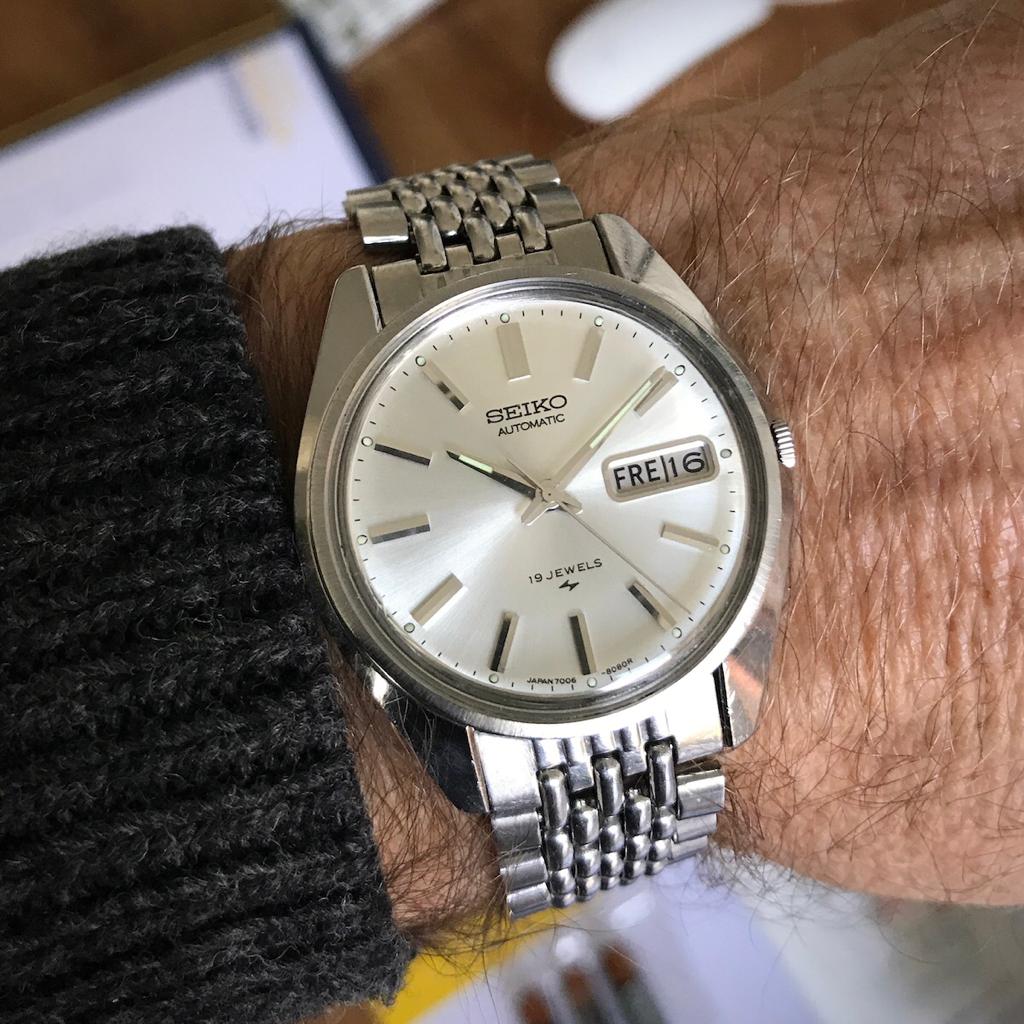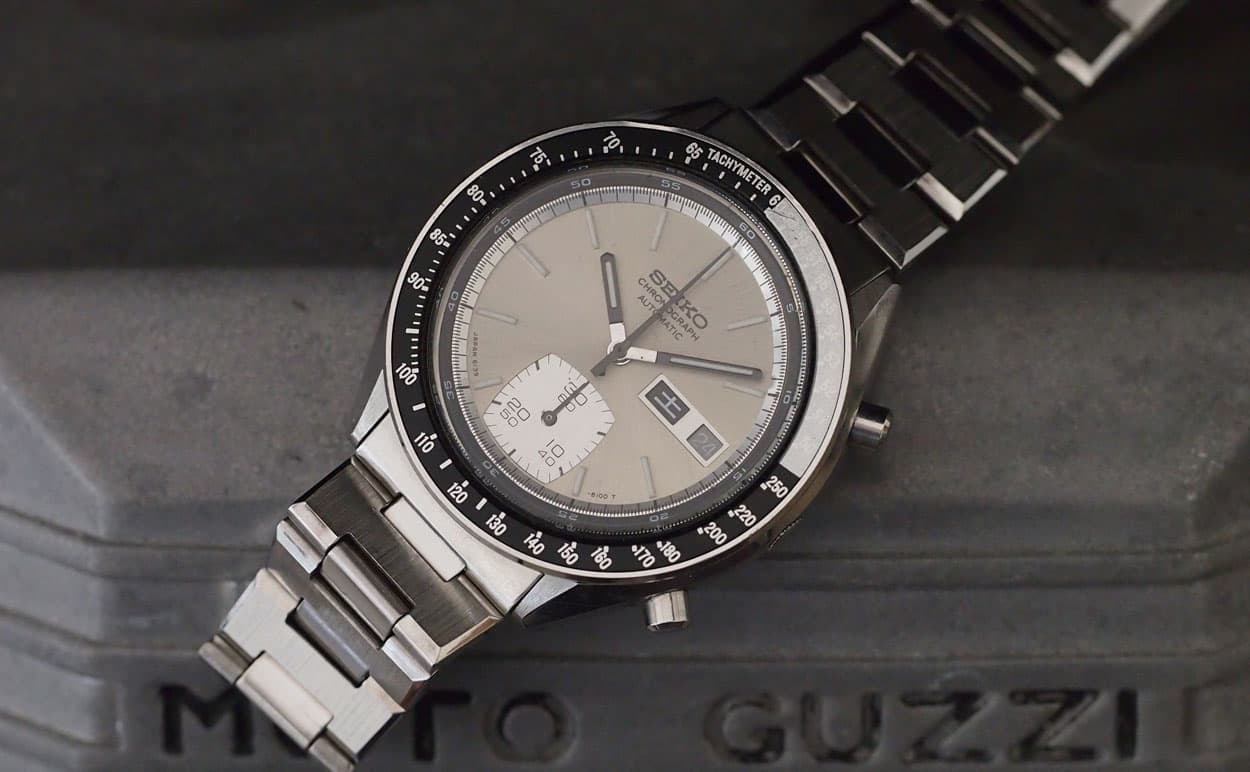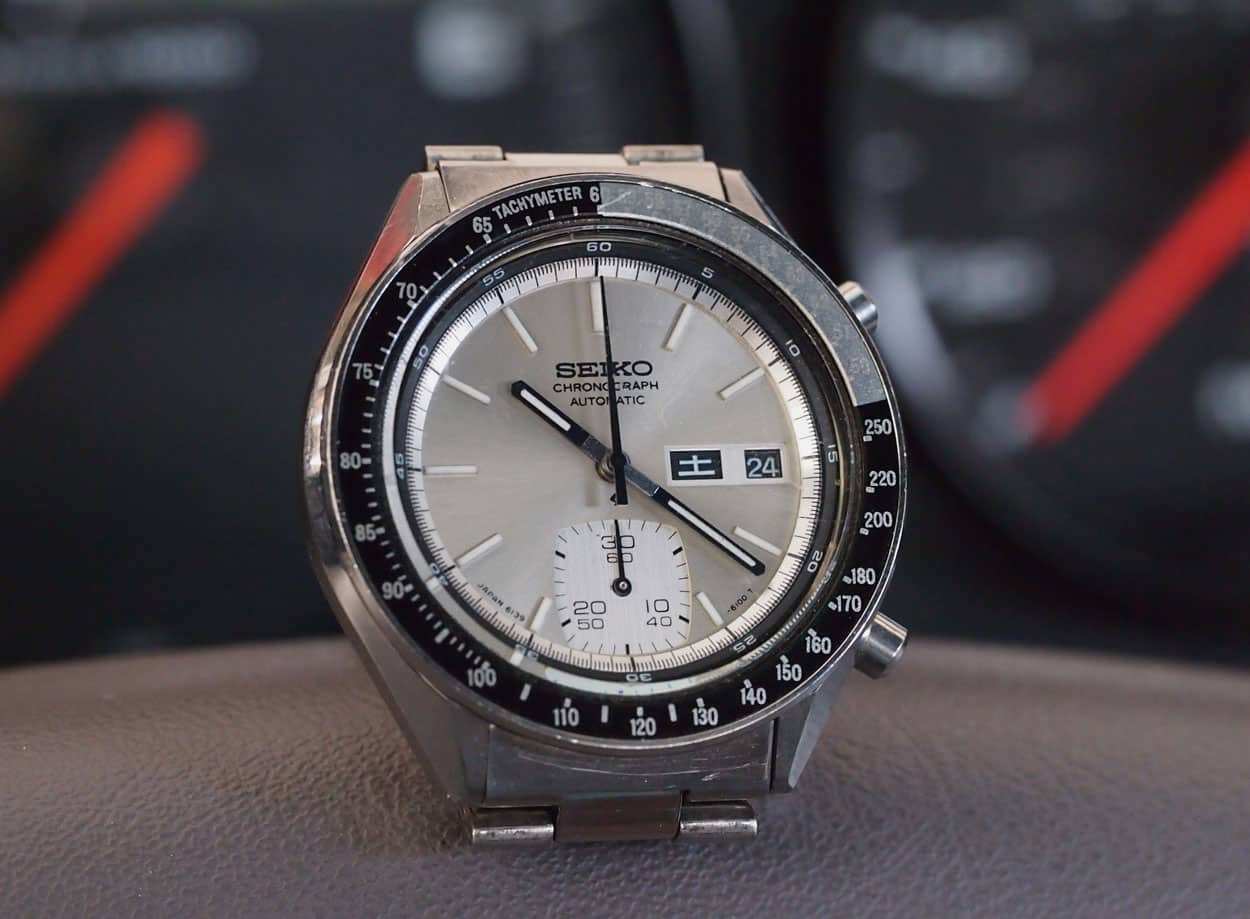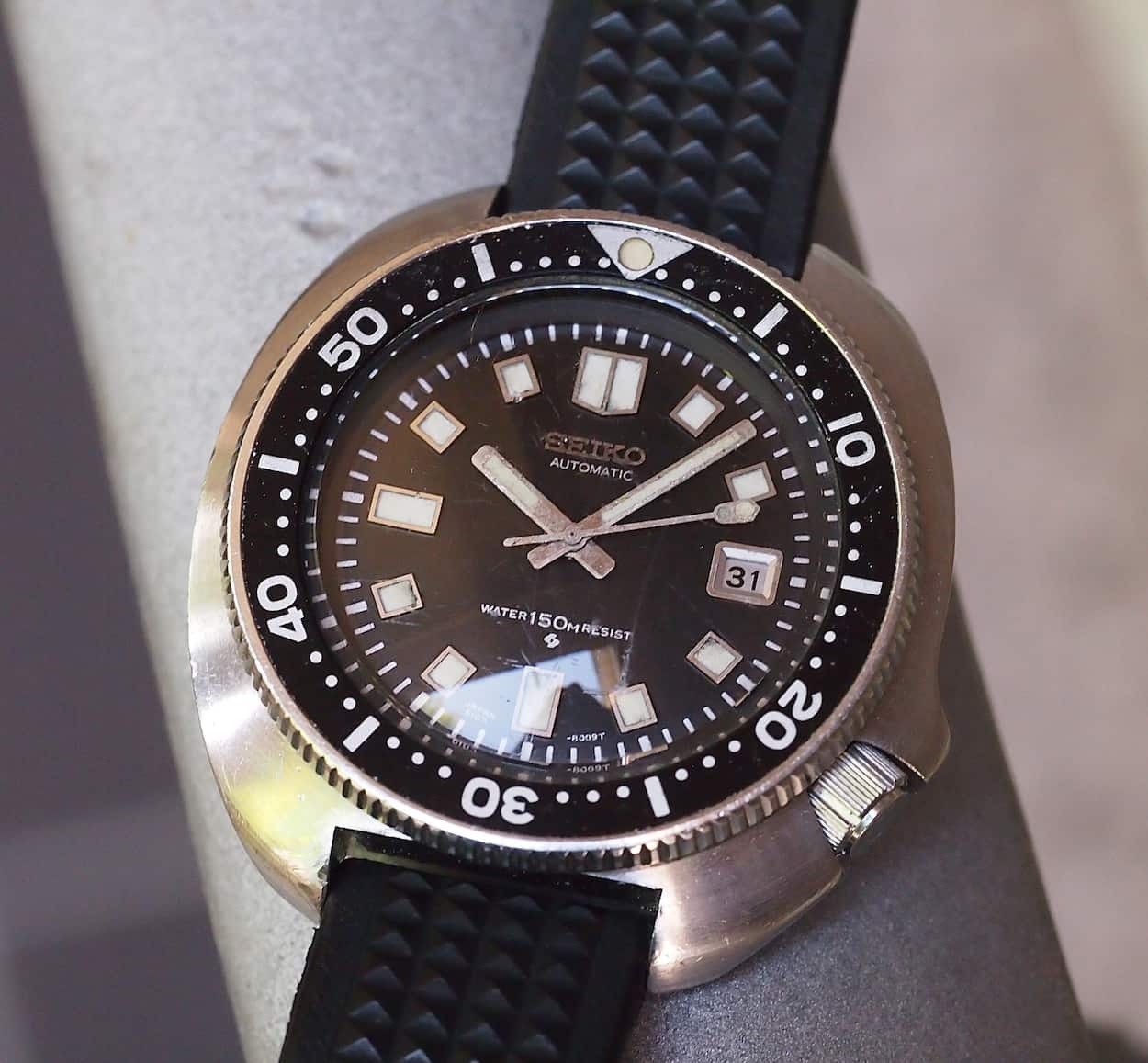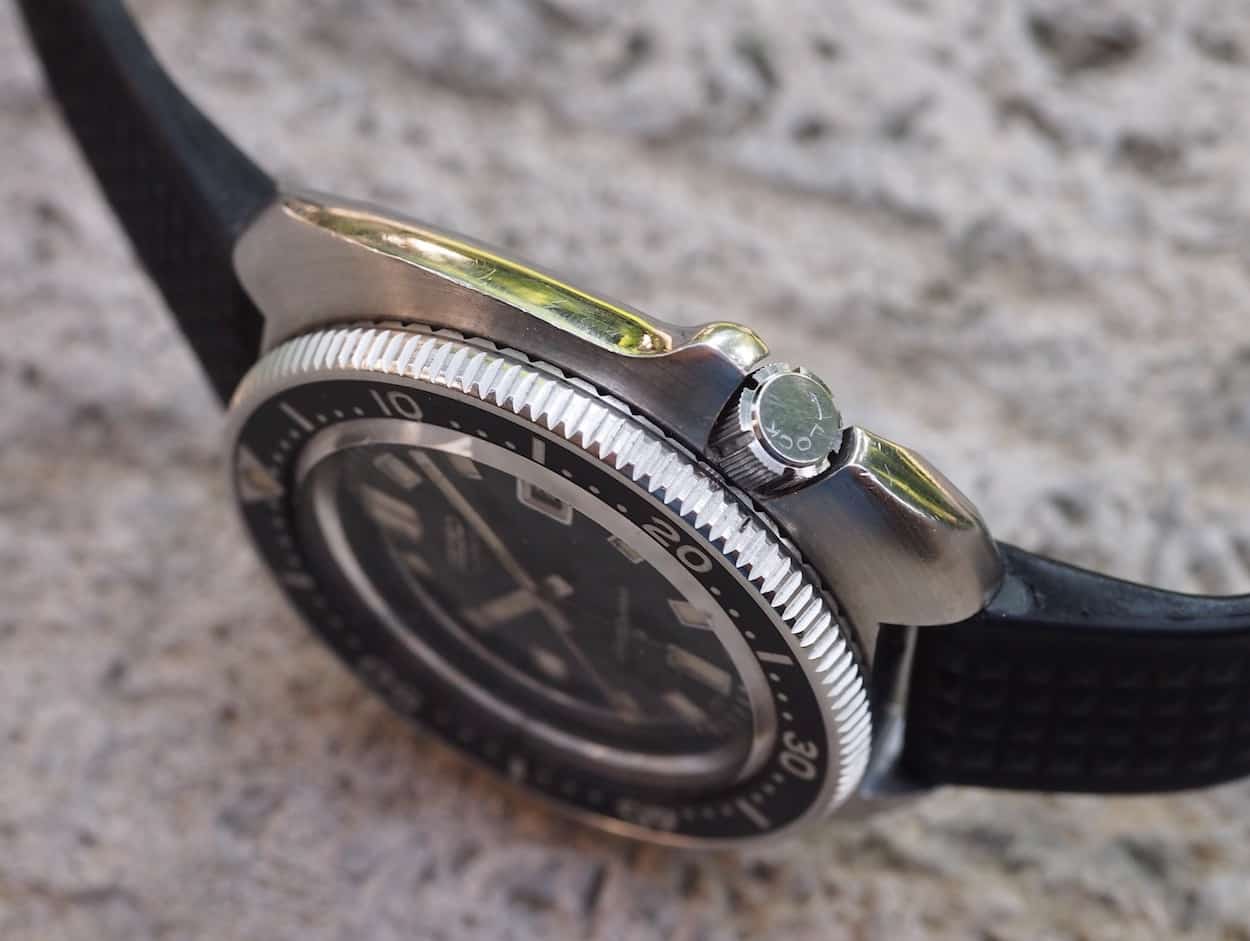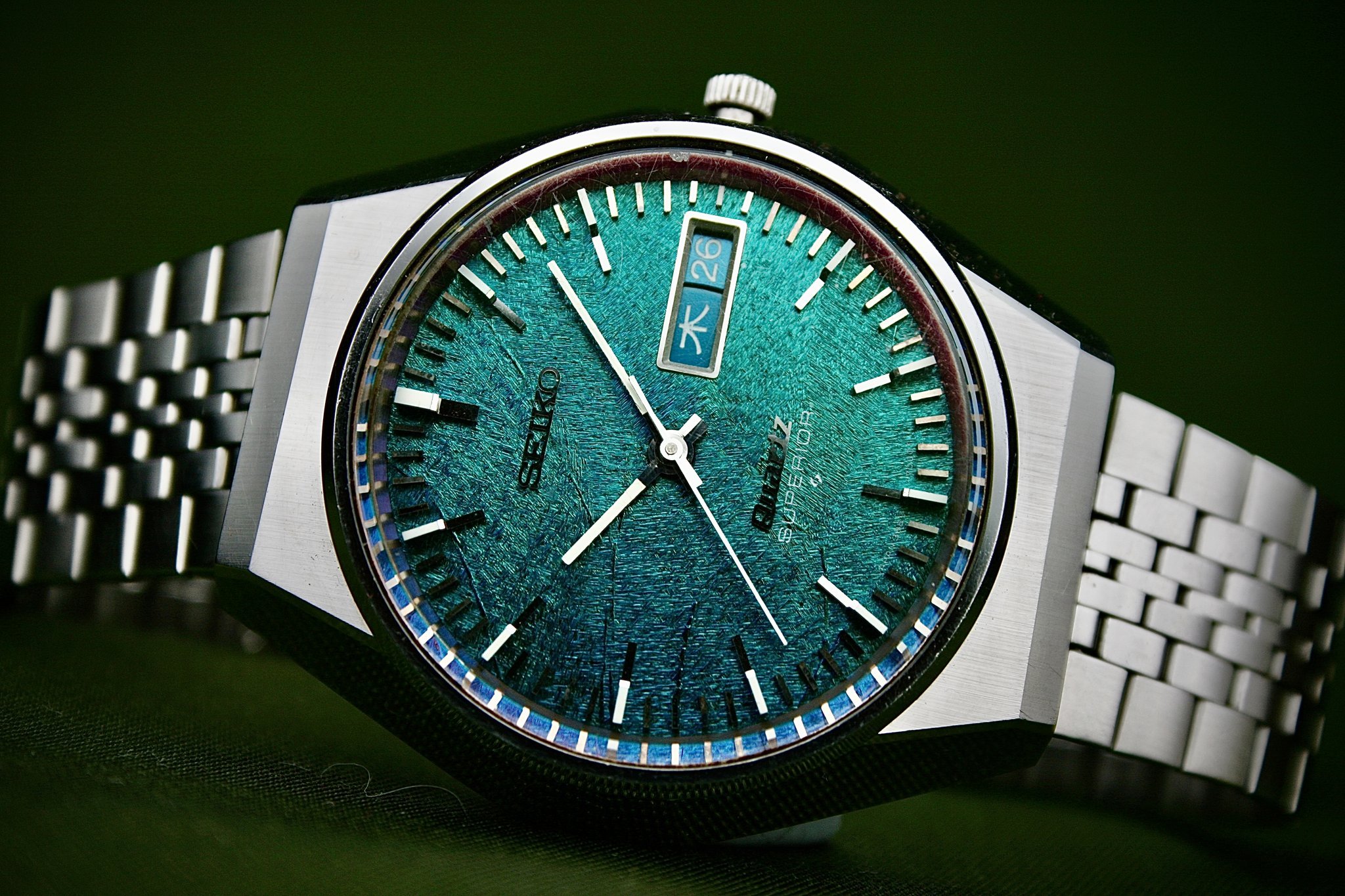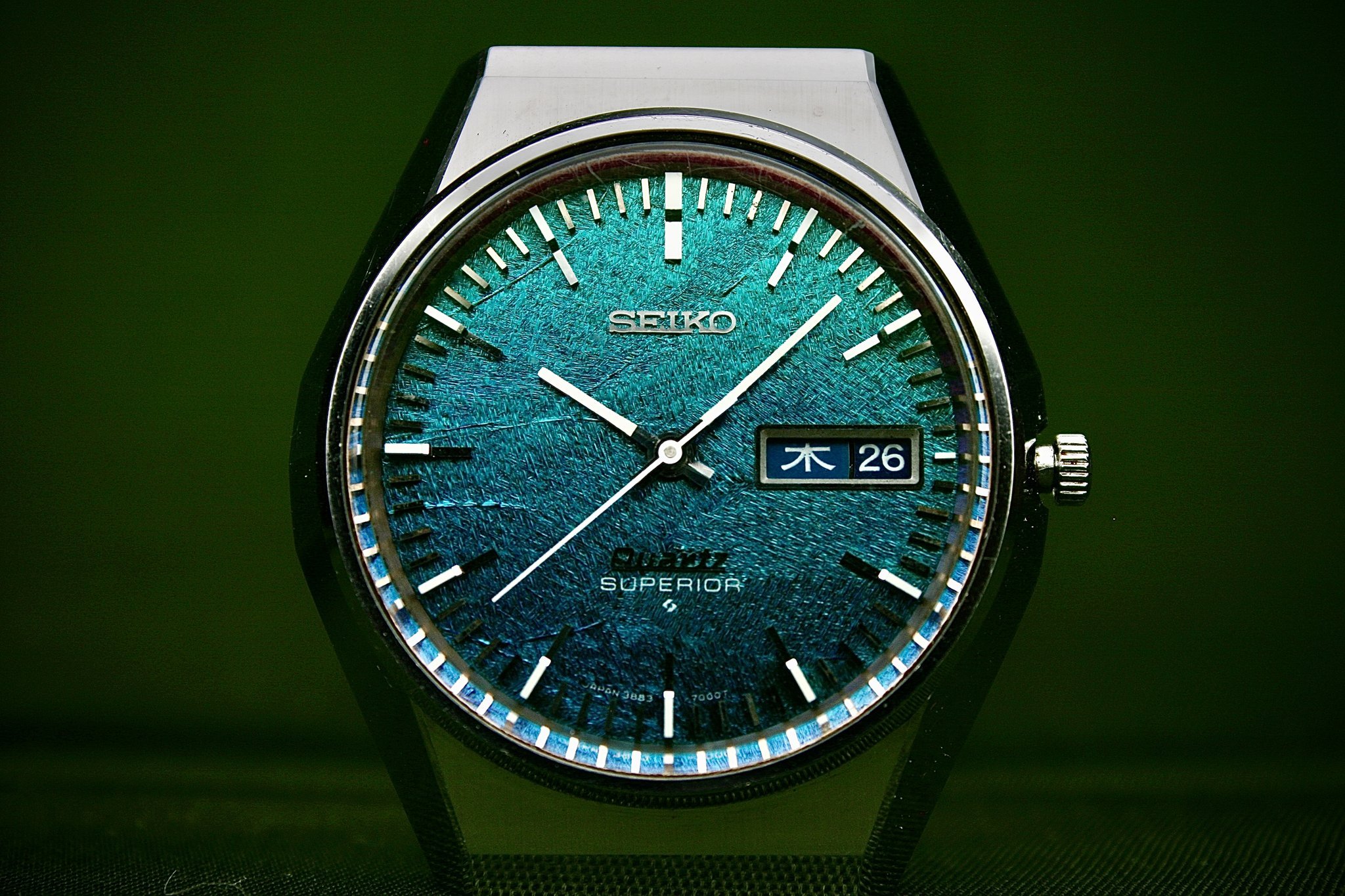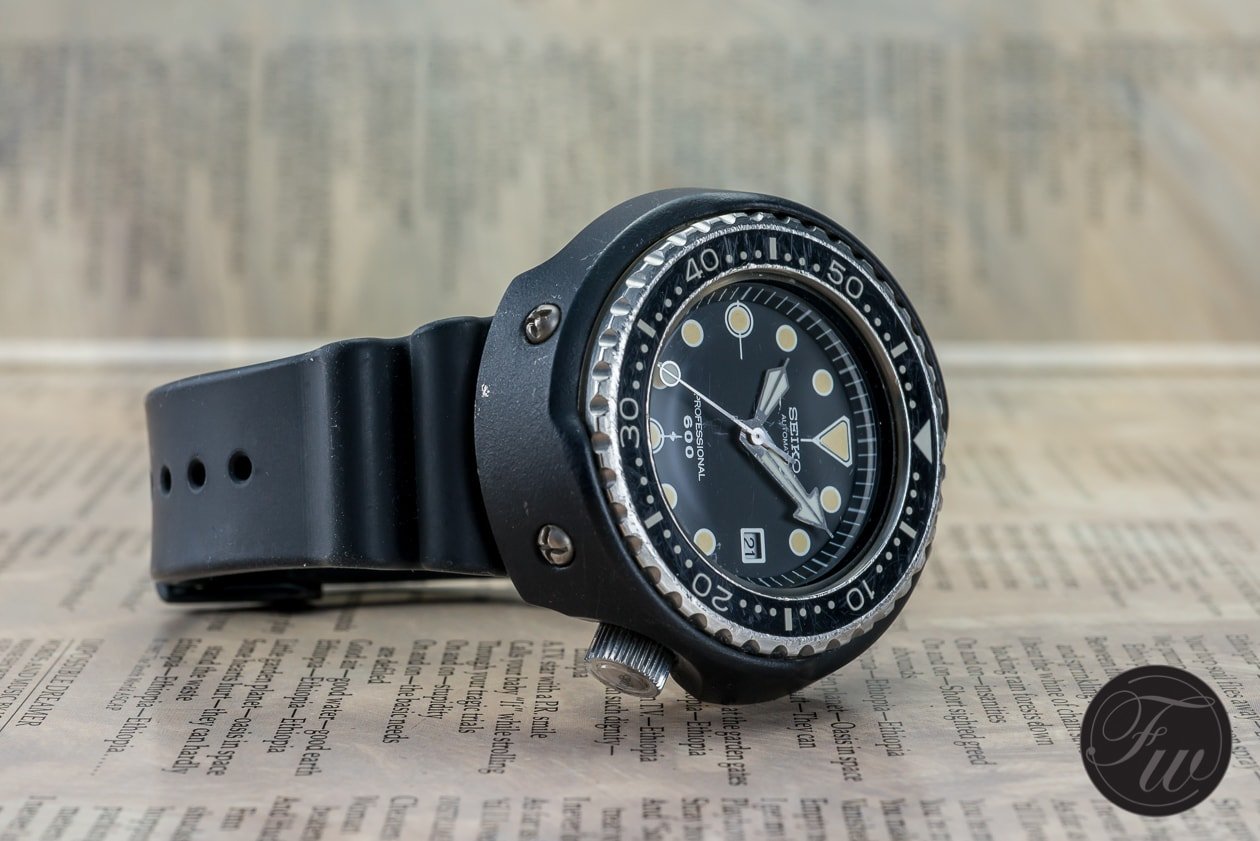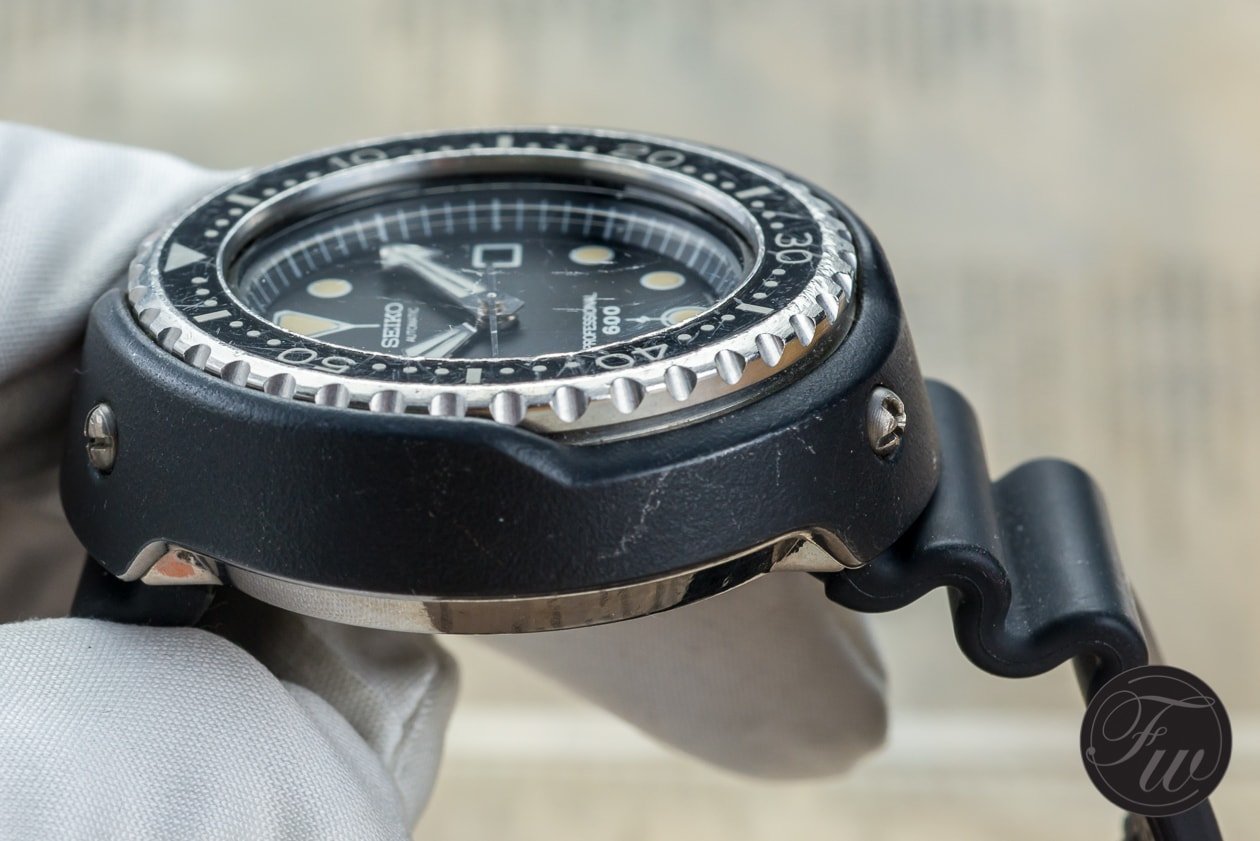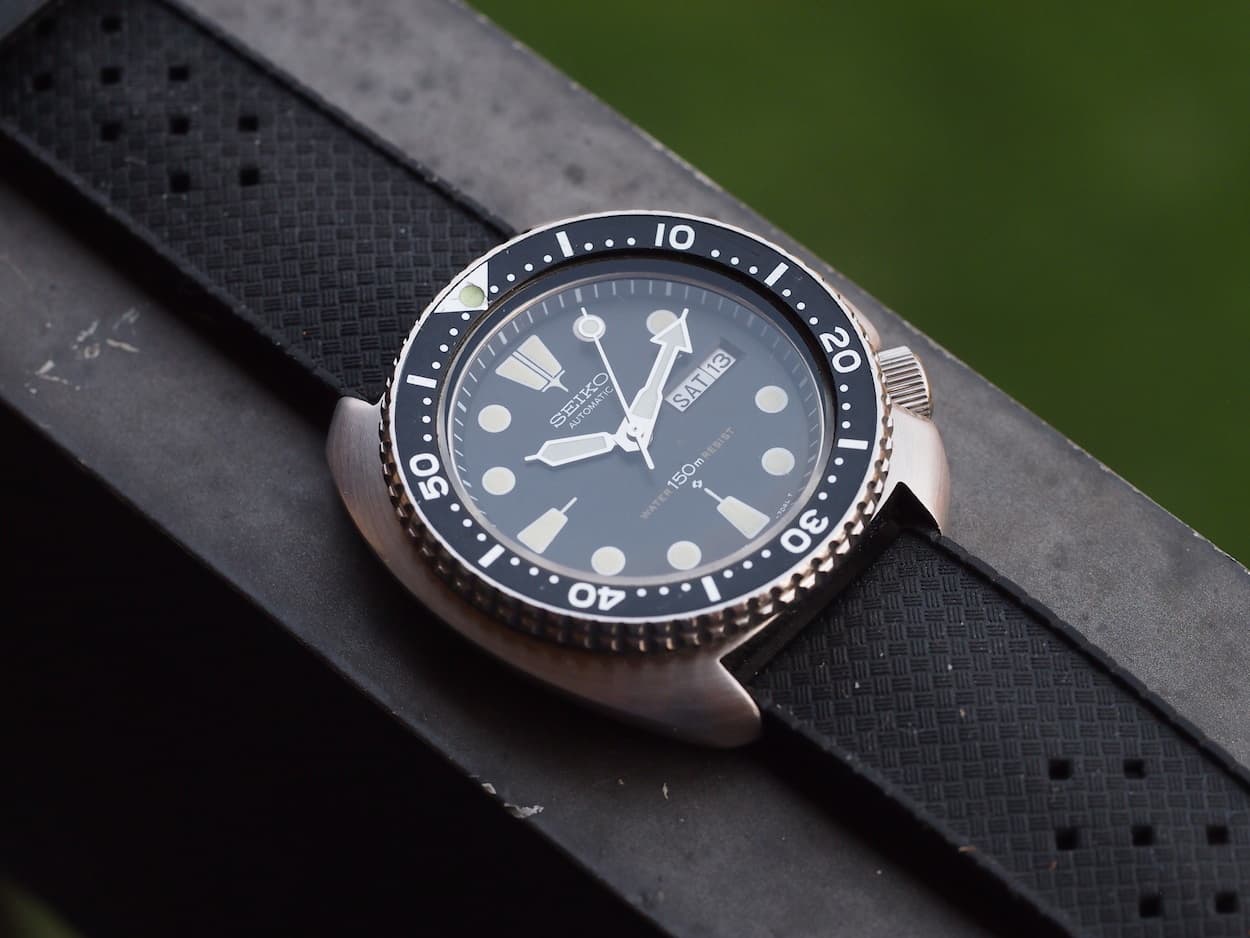Buying Guide: The Best Seiko Watches From The 1970s
We like to talk about vintage watches a lot within the Fratello team. While the daily routine is largely focused on the most recent developments in the world of watches, the most fun for many of us lies in the world of vintage watches. It’s a world full of history, remarkable watches, incredible stories, and quirky details. It inspired us to come up with a series of articles focusing on the best watches per decade from a select group of brands. Some of them priceless, some of them still affordable. In this installment, we will take a look at the best Seiko watches from the 1970s.
In the 1960s, we witnessed developments that challenged the status quo of watch design forever. The sheer amount of watches that pushed the visual boundaries of what was known and accepted was enormous. On top of that, we also saw great technical developments with the race to produce the first automatic chronograph as the most significant of the decade. The 1970s took it to a whole new level. When it comes to watch design, the seventies can only be described one way: no holds barred! The number of extravagant watches is countless. The quest for new shapes, the introduction of explosive colors, and the introduction of the automatic chronograph movement marked a wild time in the watch industry. It was a time that gave us some of the best collectible vintage watches ever.
Seiko in the 1970s
Seiko was, without a doubt, one of the if not the most important brand of the seventies. They were part of the famous race to introduce the first automatic chronograph movement. The result was the iconic 6139 movement that was introduced in 1969. In the article about the best Seiko watches from the 1960s, I included the 1969 Seiko 6139 Pogue to represent Seiko in this historic race. It comes as no surprise that you will find more of the 6139 in this list as Seiko introduced many great watches that were equipped with the 6139 movements.
The second major achievement was obviously the introduction of the Seiko Astron as the first Seiko quartz watch in 1969. We all know the incredible impact the introduction of the quartz movements had on the watch world. As Seiko was the brand that started it all, it’s hard not to include some of their quartz models in this list. And as you will find out, their quest was not just focused on creating the most accurate timepieces. Some of the watches that Seiko made during the seventies are as remarkable in design and execution as their Swiss counterparts.
Another thing that makes Seiko such a great brand to explore when it comes to vintage watches are their prices. You can often find great Seiko timepieces from the past for a fraction of the price of some of the big Swiss brands. It makes exploring the world of Seiko a great challenge for people with both small and bigger budgets. So let’s find out what some of them are.
The entry-point — Seiko 7006-8040
To start this list off, I wanted to pick a watch with great vintage charm but is also still very affordable. And the best thing about Seiko is that you can easily find a nice Seiko piece from the 1970s that doesn’t cost you an arm and a leg. My immediate thought was Fratello team member Gerard’s Seiko 7006-8040. He mentioned the watch himself in his article about budget-friendly watches. And I fully agree with Gerard that it’s a great quality watch for an amicable price. On top of that, I am amazed every time how good it looks around his wrist. It is part of Seiko’s 7000-range of watches that were Seiko’s mid-range mechanical offerings.
Seiko introduced the 7000-series in the 1970s and produced it all the way up to the 1990s. As most of you will know, the 7000 number refers to a series of movements. The 8040 number refers to the case design. Seiko used the 7006a movement that powers the 7006-8040 from 1970 until 1981. It’s an automatic movement with 19 jewels that features a day and quickset date indication. The earliest versions of the movement actually came with just a quickset date. The 7006A movement was used for various designs that go from classy to sporty to typically ’70s or ’80s.
An affordable, stylish statement
The Seiko 7006-8040 is one of the classier offerings, along with the 7006-8007. The case design is a comfortable 36mm and is inspired by the famous Grand Seiko 44GS case. The watch came with either the white sunburst dial you see in the pictures or a dark grey dial. Both dial colors look incredibly classy in combination with the applied indexes and the simple but effective layout. Add the case design and that wonderful bracelet design, and this is definitely a great pick for an affordable vintage Seiko from the 1970s.
While the watch definitely looks great on a leather strap as well, the beads and rice style bracelet adds style and sophistication that not only makes it look better. It also gives the watch an extra dose of 1970s style. Gerard’s 7006-8040 is from 1973, but these watches were produced during a greater part of the decade. Its style, reliable movement, and friendly prices make the 7006-8040 a fan amongst collectors. Finding one is not that hard, although finding one in good condition might take you some time. But what you get in return for the roughly €250 to €500 prices that these tend to go for is quite spectacular. If you ask me, the pictures say it all. It’s hard to beat the 7006-8040 for the money.
My choice — Seiko 6139-6040 “Silver Ghost”
My pick for this list has been high on the list of future purchases for some time. It still is on the list has everything to do with finding one in great condition for a good price. But let’s start at the beginning. I featured the Seiko 6139-6040 in my list of five favorite vintage chronographs. There is something incredibly appealing about the watch’s presence. Quite a few people find the design of this “Silver Ghost” — a nickname referring to the often faded bezel — rather boring. It features a pretty straightforward round case with short lugs and pump pushers. On top of that, the grey and black color combination is rather subdued, especially if you compare it to its brother that came with an orange dial. While I greatly appreciate watches that stand out, the fact that this doesn’t is why I like it so much.
Mike actually owns a 6139-6040 and wrote a great article comparing the watch to the Zenith El Primero A386. Both watches are obviously a result of the race for the first automatic chronograph movement. As most of you will know, the 6139-6040 is one of the many Seiko models released in the 1970s that featured the legendary automatic Seiko Caliber 6139. It sits inside the 40mm case that has a lug-to-lug of only 42mm due to its small lugs. The movement is a single register (minutes) column-wheel integrated chronograph movement. As Mike explained: “it utilizes parts of the rugged, read: bulletproof 6106 movement. Day and date are changed quick-set style by pushing in the crown either one or two detents.”
A faded bezel issue
The 6139-6040 was produced for 2–3 years in the mid to late 1970s. Look around for some time, and you will find out that quite a few on offer are from 1977. And that specific detail triggered my attention even more. As I was born in 1977, this is the perfect addition to my collection to find one from my year of birth in good condition. I say good and not great. One in great condition is very hard to find. The main issue you will see is the incredible fading of the bezel. As a result, the first part of the tachymeter scale is invisible. Stupidly enough, I find that production issue adds a weird charm,
But there are more things to look out for. Often you see the original champagne-colored dials are in bad condition. On top of that, hands are often not original, and bracelets have been replaced over time. Although I must say that while the watch was advertised with the Oyster-like bracelet you see on Mike’s piece, it’s quite well possible that it was delivered on different bracelets. So, all in all, finding a good one with original parts can be quite a challenge. And as this watch has slowly become more possible with collectors, prices also have gone up gradually. Expect to pay anywhere from roughly €500 to around €1,500 for one in great condition. The ones that are in great condition will make for one of the best, understated sports chronographs from the 1970s.
Money is no object #1 — Seiko 6105-8110 “Captain Willard”
The Seiko 6105-8110 is not just one of the many iconic divers from Seiko. As many of you know, it became known as the “Captain Willard” because Martin Sheen wore the watch in the iconic movie Apocalypse Now from 1979. As Captain Benjamin L. Willard, he is given the task during the Vietnam War to kill Colonel Walter E. Kurtz — played by Marlon Brando — who is running a rogue operation deep in the jungle. Both Sheen and Brando wore iconic watches in the movie. While Brando was famously wearing a bezel-less Rolex GMT-Master ref. 1675, the movie made Sheen’s Seiko 6105-8110 a watch industry icon.
As Mike explained in his article, the 6105-series was the follow-up to the famous Seiko 62MAS. The first model introduced in 1968 with 6105-8000 (6105-8009 for the US market) featured a symmetrical case. Seiko used their automatic Calibers 6105A (non-hacking) and 6105B (hacking) that both feature a date function during its production run. The 6105-8000 featured a non-locking crown and a bi-directional bezel that doesn’t click. The Seiko 6105-8110 was first introduced around 1970 and produced until 1977. Seiko decided to change the case design and make it asymmetrical. On top of that, the brand introduced some welcome technical updates as well.
The magic is in the original
The 6105-8110 was the first Seiko featuring an asymmetrical case design. It’s an impressive 44mm case with a familiar shape, a 19mm lug width, and integrated crown guards. The case design was the blueprint for the Seiko 6306/6309 models that we know as the first Seiko Turtle models. Inside the case, Seiko used the same Caliber 6105B as its predecessor. The 17 jewel automatic movement operates at 21,600vph, has a quick-set date, and does not hand-wind due to Seiko’s magic lever system. The watch is water-resistant up to 150 meters and features a black dial and bi-directional rotating click bezel with black inlay. Furthermore, it is equipped with Seiko’s in-house Hardlex crystal. The crown is placed at the typical 4 o’clock position and uses a turn and lock system that Seiko only used for this model.
Over time, the “Captain Willard” has become quite a popular collector’s piece. And it’s easy to recognize why. It’s part of the iconic Seiko divers legacy, introduced the famous case design that became iconic in the industry and was worn in a Hollywood classic. Seiko has recognized it as well with a string of modern versions. In 2019, the brand introduced the limited edition SLA033 re-edition, and last year, Seiko released the slightly smaller Modern Reinterpretation Prospex SPB151 And SPB153. Only a few months ago, Seiko also added the Prospex SLA049 and SLA051. All of them show what makes the “Captain Willard” such a great watch. Prices for the original Seiko 6105-8110 “Captain Willard” start at roughly 2K and move up to 3.5K for one in great condition. While that is more expensive than the current Prospex models, nothing beats the original in terms of charm and storytelling.
Money is no object #2 — Seiko 3883-7000 “Morpho” dial
As I mentioned earlier, Seiko introduced their quartz watches as a result of the quest to create the most accurate timepieces ever. And that quest remained the ultimate goal after the introduction of the first quartz Seiko Astron in 1969. Seiko’s efforts to come up with the best quartz-powered watches delivered some amazing results. Our own Tomas wrote a great insightful article about the Seiko Superior 9983-7000 in which he explained more about Seiko’s quest for excellence. My pick for this list is the first generation Seiko Superior ref. 3883-7000 with the famous “Morpho” dial. This watch combines extreme accuracy, an incredible design developed according to Tanaka’s Grammar of Design, and a simply breathtaking dial. This dial is also known as the “Morpho” or “Butterfly” dial because it changes color from green to blue.
There are actually two versions of the watch that first showed up in the Seiko catalog in 1974. It’s known that some of the first Superior quartz pieces were actually produced a year earlier. The first of the two models was a Japan Domestic Model (JDM) with ref. 3883-7000 features the words “Quartz Superior” on the lower part of the dial (see pictured). Seiko also released an international version that had a slightly different dial with ref. 3883-7009. The quartz wording moved up to the Seiko logo, and Superior was replaced by “GFA” that stood for “Grand Fine Accuracy.” Seiko released both mechanical and quartz movements with the VFA (Very Fine Adjusted) mark on the dial. Compared to the VFA quartz movement, the quartz Caliber 3883 GFA produced by Suwa Seikosha was a step up, increasing the accuracy to ±2 seconds per month.
It’s always been expensive
As you can read in Tomas’ article, Seiko further increased the accuracy during the seventies leading to even more spectacular results. But when it comes to the combination of accuracy, design, and a unique dial, the 3883-7000 is unmatched. It’s not just the texture and the color that make this dial incredible. Just look at all the applied indexes for every single minute. The day and date indication stands out without interfering with the magic of the dial. The design and finishing of the 37mm steel case were developed according to Taro Tanaka’s Grammar of Design rules, leading to sharp lines and an absolutely stunning finish. The crown was deliberately small and sunken away in the case — in the pictures, it is out. On top of that, the original bracelets were absolutely stunning, made to hug the wrist. Seiko did not kid around with this Seiko Superior line.
To give you an idea, these first-generation Seiko Superior watches were priced at 220,000 yen. It made them twice the price of a Grand Seiko 61GS. The Seiko Superior 3883-7000 did not only come with this dial. The brand also produced the same model with a white silver dial that also looks stunning. But if there is one winner, it has to be this version pictured with the “Morpho” dial. Finding one is tough as there weren’t that many produced. And there aren’t that many in original condition on top of that. It is especially difficult to find one with the original bracelet. So if you want one, expect an extensive search, and you will have to pay roughly between 2K and 4.5K depending on the condition. It’s a lot of money but what you get in return beats vintage pieces double the price in terms of coolness easily.
Money is no object #3 — Seiko 6159-7010 “Grandfather Tuna”
The Seiko Tuna models are, without a doubt, some of the most iconic diving watches out there. But they are also amongst the most divisive in terms of looks and size. Within the Fratello team, quite a few editors love the Tuna models, and I am no exception. Although it definitely wasn’t love at first sight, the iconic design comes from the functional need to develop a professional diving watch that can be used at great depths. And that functionality is a great story that gives the design purpose, and I greatly appreciate that. The Seiko 6159-7010 was the result of years of development. Its predecessor, the Seiko 6159-7001, is absolutely iconic. But they were also flawed because the story goes that deepwater workers complained about crystals popping off at great depths. That’s why Seiko decided to stop the production and focus on developing a completely new professional diver.
The result came in 1975 with the Seiko 6159-7001 that is known also known as the “Grandfather Tuna.” The watch measures a whopping 51mm, making it a huge piece. But it’s all for a reason. Seiko incorporated several industry firsts that led to this big watch. The “Grandfather Tuna” features a titanium monocoque inner case with a steel bezel and a protective black ceramic coated titanium shroud that is bolted to the inner case. Furthermore, it features an L-shaped gasket, a Hardlex crystal, and a polyurethane strap. Because of its unique construction, the watch is water-resistant up to 600 meters and does so without a helium valve. Gerard wrote a great in-depth piece about the Seiko Tuna watches explaining more about the Tuna’s construction.
Smaller than its size implicates
As Mike explained in his in-depth article about the “Grandfather Tuna,” the protective shroud does not only add to the watch’s size but also defines divisive looks. With its cylindrical shape of the lugless watch casing, its form resembled a tuna can. It’s what gave this watch and all its successors the Tuna nickname. The iconic shroud actually has two access points to spin the bidirectional bezel, and the big bolts on both sides add even more to the industrial aesthetics. Inside the case, Seiko equipped the watch with its automatic Caliber 6159a. This hi-beat movement is a Grand Seiko-derived and operates at 36,000vph, features a quickset date, hacks, and can be hand-wound. After the disappointing performance of its predecessors, Seiko did not take any risks with the 6159-7010 and striving for the absolute best.
The results were impressive still to this day. When it comes to looks, it’s probably a love or hate situation. Seiko produced the “Grandfather Tuna” from 1975 until 1979, when it was replaced with the quartz-powered reference 7549-7009 “Golden Tuna.” In terms of wearability, you might think the Seiko 6159-7010 must wear very large. You will be surprised that it actually doesn’t. I had a chance to try Mike and Gerard’s “Grandfather Tuna’s” on multiple occasions. I was delighted to find out that they wear rather comfortably. Finding a 6159-7010 is quite a challenge. There are always a few on offer, but their condition varies greatly as they were tool watches. Expect to pay anywhere between 3.5K and 8K for a 6159-7010 “Grandfather Tuna.” For that money, you will own one of the industry’s greats that belongs on a list with the best professional diving watches.
Final Thoughts
In this series of articles, I cannot stress enough to do your research if you want to buy a vintage watch. On top of being crucial in not becoming disappointed with your purchase, it is also a lot of fun. Mike and Gerard’s articles for Fratello are great references to get to know quite a few of the Seiko vintage models. Mike wrote a great article on collecting vintage Seiko watches that I suggest you read. On top of that, visit sites like Plus9Time and Ikigai Watches for more info. Contacting a vintage expert will also help out a lot. It’s a great way to learn more about watches and get to know some amazing people along the way.
When it comes to vintage Seiko watches from the 1970s, a list of five is too short. The Lord Matic models, the first 6309 “Turtle,” the 6138-8020 “Panda,” the 6138-0040 “Bullhead,” there are so many Seiko watches that deserve a place on this list. What is great to see, though, is that the five watches on this list go from relatively affordable to expensive. One of the things to keep in mind when it comes to vintage Seiko watches is that there are many fakes and Franken pieces out there. On top of that, many parts have been replaced over time. So you really have to know your stuff to be able to judge the watches on offer. But once you do, you will realize why vintage Seiko’s are both iconic and a lot of fun to collect.
Next week, we will take a look at some of the best Breitling watches from the 1970s, so keep your eye out for that. In the meantime, let us know in the comment section what your favorite Seiko from the 1970s is.

